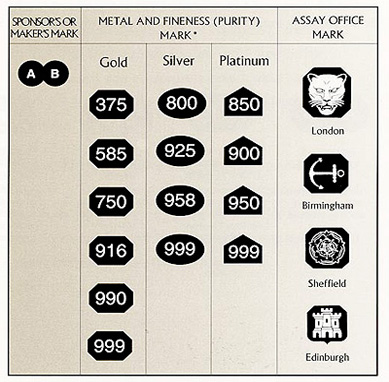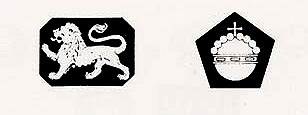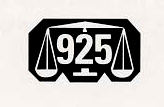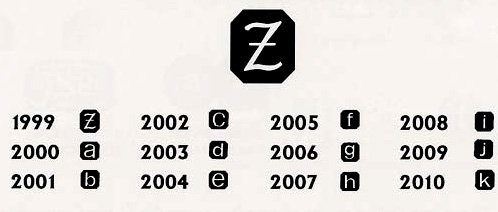|
It is illegal for any trader to sell or describe
a precious metal article as gold, silver or platinum unless it is
hallmarked. Gold articles weighing less than 1 gram, silver articles
weighing less than 7.78 grams and platinum articles weighing less
than half a gram are exempt from hallmarking.
The British UK hallmark guarantees that the purity of the
metal is at least that indicated by the fineness Number. Below are some examples of current UK hallmarks.

Compulsory marks
Modifications to the hallmarking Act, effective from 1 January 1999,
Have changed the way articles made of precious metal are hallmarked.
The UK Hallmark now comprises a minimum of three compulsory symbols.
Sponsors or Makers Mark
Indicates the maker or sponsor of the article. In Britain,
this mark consists of at least two letters within the
shield, and no two marks are the same.Metal
and Fineness (Purity) MarkIndicates the
precious metal content of thee article, and that it is not
less than the fineness indicated. Since 1999, all finesses
are indicated by a millesimal number (e.g. 375 is 9ct). This
number is contained in a shield depicting the precious
metal.Assay Office Mark
Indicates the particular Assay Office at which the article
was tested and marked. There are now four British Assay
Offices – London, Birmingham, Sheffield and Edinburgh. There
were other Assay Offices in former times. |
 |
Voluntary Marks in English Hallmarks
Traditional Fineness (Purity) Mark
Prior to 1999, silver and platinum finenesses were indicated by
symbols.

Common Control Mark
This is a mark used by countries which are signatories to the
International Convention on Hallmarks.

Date Mark
Until 1999, a date letter indicating the year of hallmarking was
compulsory. This is no longer so, but it can be applied voluntarily
in addition to the compulsory marks.

Commemorative Mark
One example is the Millennium Mark which will be applied to precious
metals by the four UK Assay Offices during 1999 and 2000.

Search ?
|
gold and silver hallmarks
|

